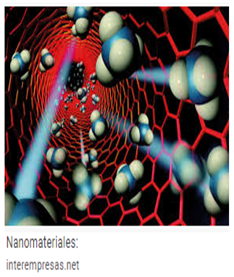ENGINEERING CONTROLS AND PERSONAL PROTECTIVE EQUIPMENT
Physical behavior of aerosols in air. "The emphasis on smaller aerosol control strategies" "Control techniques" "Uses of Personal Protective Equipment"

"Physical behavior of aerosols in air" Occupational safety and health professionals drew on the long and successful history of fine dust control, where evidence indicates that nanoparticles followed the physical behavior of aerosols in air, therefore, they were susceptible to dust technologies. established exposure controls. Subsequent investigations by agencies such as NIOSH concluded that worker exposure was related to specific material handling practices and processing tasks (NIOSH 2009a).
"The emphasis on smaller aerosol control strategies" As with many historical workplace pollutants, the potential for inhalation exposure became a focus of attention. However, due to the higher respiratory deposition of nanoparticles versus microparticles, more emphasis was placed on exposure control strategies that could capture the smaller aerosols. A secondary concern was dermal exposure, due to the ability of some types of nanoparticles to enter through damaged skin."Control techniques" Initial exposure control recommendations included the use of local exhaust ventilation (LEV), equipped with high-efficiency particulate air (HEPA) filters, if necessary; use of wet cleaning methods or HEPA-equipped vacuums (NIOSH 2009a).
"Uses of Personal Protective Equipment"
 Rengasamy et al. (2008), found that mask respirators with the N95 and P100 filter generally removed more than 95% of the nanoparticles, and the effectiveness increased as the diameter of the particles decreased below 30 nm (Rengasamy et al. 2008) . Safe Work Australia discussed the methods by which nanoparticle entrapment occurs and recommended further exploration of the use of electrostatic precipitators and, for some processes, the entire enclosure, as well as eye and face protection (Safe Work Australia 2009).
Rengasamy et al. (2008), found that mask respirators with the N95 and P100 filter generally removed more than 95% of the nanoparticles, and the effectiveness increased as the diameter of the particles decreased below 30 nm (Rengasamy et al. 2008) . Safe Work Australia discussed the methods by which nanoparticle entrapment occurs and recommended further exploration of the use of electrostatic precipitators and, for some processes, the entire enclosure, as well as eye and face protection (Safe Work Australia 2009).
This study by Schulte et al., (2000) discusses NIOSH recommendations on engineering controls and use of PPEs related to task-based hazard identification and material toxicology, as well as technological developments for evaluation engineering controls.
Temas relacionados:
physical behavior of aerosols in air
También te puede interesar
Esta web se reserva el derecho de suprimir, por cualquier razón y sin previo aviso, cualquier contenido generado en los espacios de participación en caso de que los mensajes incluyan insultos, mensajes racistas, sexistas... Tampoco se permitirán los ataques personales ni los comentarios que insistan en boicotear la labor informativa de la web, ni todos aquellos mensajes no relacionados con la noticia que se esté comentando. De no respetarse estas mínimas normas de participación este medio se verá obligado a prescindir de este foro, lamentándolo sinceramente por todos cuantos intervienen y hacen en todo momento un uso absolutamente cívico y respetuoso de la libertad de expresión.
No hay opiniones. Sé el primero en escribir.












